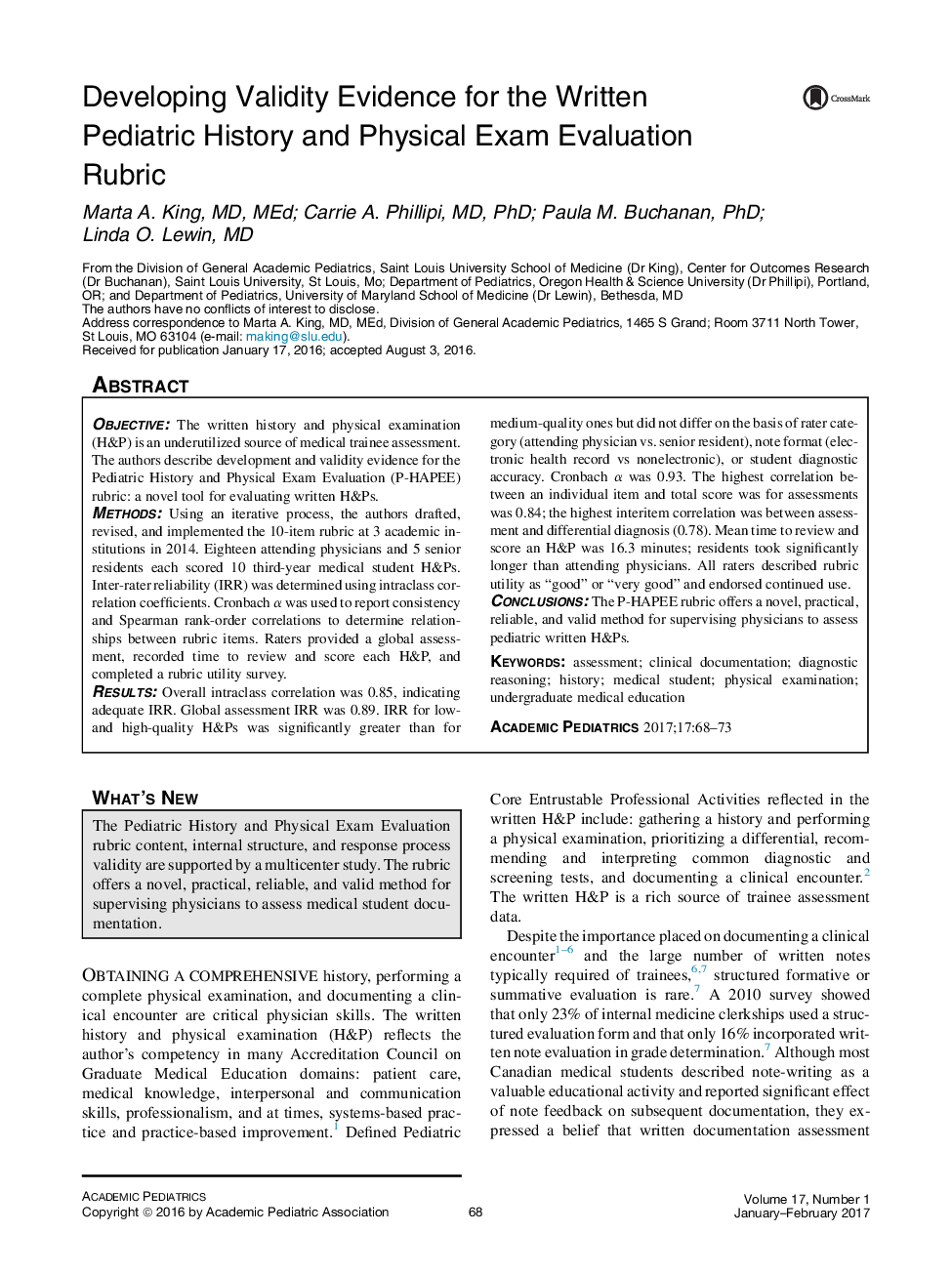| Article ID | Journal | Published Year | Pages | File Type |
|---|---|---|---|---|
| 5717022 | Academic Pediatrics | 2017 | 6 Pages |
ObjectiveThe written history and physical examination (H&P) is an underutilized source of medical trainee assessment. The authors describe development and validity evidence for the Pediatric History and Physical Exam Evaluation (P-HAPEE) rubric: a novel tool for evaluating written H&Ps.MethodsUsing an iterative process, the authors drafted, revised, and implemented the 10-item rubric at 3 academic institutions in 2014. Eighteen attending physicians and 5 senior residents each scored 10 third-year medical student H&Ps. Inter-rater reliability (IRR) was determined using intraclass correlation coefficients. Cronbach α was used to report consistency and Spearman rank-order correlations to determine relationships between rubric items. Raters provided a global assessment, recorded time to review and score each H&P, and completed a rubric utility survey.ResultsOverall intraclass correlation was 0.85, indicating adequate IRR. Global assessment IRR was 0.89. IRR for low- and high-quality H&Ps was significantly greater than for medium-quality ones but did not differ on the basis of rater category (attending physician vs. senior resident), note format (electronic health record vs nonelectronic), or student diagnostic accuracy. Cronbach α was 0.93. The highest correlation between an individual item and total score was for assessments was 0.84; the highest interitem correlation was between assessment and differential diagnosis (0.78). Mean time to review and score an H&P was 16.3 minutes; residents took significantly longer than attending physicians. All raters described rubric utility as “good” or “very good” and endorsed continued use.ConclusionsThe P-HAPEE rubric offers a novel, practical, reliable, and valid method for supervising physicians to assess pediatric written H&Ps.
